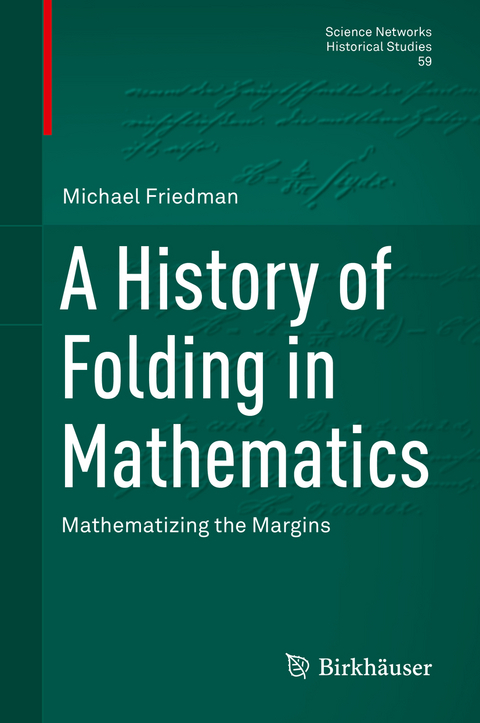
A History of Folding in Mathematics
Springer International Publishing (Verlag)
978-3-319-72486-7 (ISBN)
While it is well known that the Delian problems are impossible to solve with a straightedge and compass - for example, it is impossible to construct a segment whose length is cube root of 2 with these instruments - the discovery of the Italian mathematician Margherita Beloch Piazzolla in 1934 that one can in fact construct a segment of length cube root of 2 with a single paper fold was completely ignored (till the end of the 1980s). This comes as no surprise, since with few exceptions paper folding was seldom considered as a mathematical practice, let alone as a mathematical procedure of inference or proof that could prompt novel mathematical discoveries. A few questions immediately arise: Why did paper folding become a non-instrument? What caused the marginalisation of this technique? And how was the mathematical knowledge, which was nevertheless transmitted and prompted by paper folding, later treated and conceptualised?
Aiming to answer these questions, this volume provides, for the first time, an extensive historical study on the history of folding in mathematics, spanning from the 16th century to the 20th century, and offers a general study on the ways mathematical knowledge is marginalised, disappears, is ignored or becomes obsolete.
In doing so, it makes a valuable contribution to the field of history and philosophy of science, particularly the history and philosophy of mathematics and is highly recommended for anyone interested in these topics.Introduction.- From the 16 th Century Onwards: Folding Polyhedra. New Epistemological Horizons?.- Prolog to the 19 th Century: Accepting Folding as a Method of Inference.- The 19 th Century - What Can and Cannot be (Re)presented: On Models and Kindergartens.- Towards the Axiomatization, Operationalization and Algebraization of the Fold.- The Axiomatization(s) of the Fold.- Appendix I: Margherita Beloch Piazzolla: "Alcune applicazioni del metodo del ripiegamento della carta di Sundara Row".- Appendix II: Deleuze, Leibniz and the Unmathematical Fold.- Bibliography.- List of Figures.
"Friedman's new book is the first modern scholarly account of the history of mathematical paper folding. ... His insights and detailed scholarship make this an invaluable source book for anyone interested in the history of mathematics. ... Summing Up: Recommended. Upper-division undergraduates and above." (R. L. Pour, Choice, Vol. 56 (05), January, 2019)
"The work offers a wealth of mathematical and historical information on a wide selection of topics that involve folding. ... the author provides general readers, as well as historians and mathematicians, with a fascinating, well-researched, richly illustrated, well-referenced, and valuable resource on the history of paper folding and its mathematical aspects." (James J. Tattersall, Mathematical Reviews, January, 2019)
| Erscheinungsdatum | 15.06.2018 |
|---|---|
| Reihe/Serie | Science Networks. Historical Studies |
| Zusatzinfo | XV, 419 p. 134 illus., 42 illus. in color. |
| Verlagsort | Cham |
| Sprache | englisch |
| Maße | 155 x 235 mm |
| Gewicht | 812 g |
| Themenwelt | Mathematik / Informatik ► Mathematik ► Allgemeines / Lexika |
| Mathematik / Informatik ► Mathematik ► Geschichte der Mathematik | |
| Schlagworte | Dürer's nets and the folding of polyhedra • Dürer’s nets and the folding of polyhedra • folding based geometry • folding in kindergarten • marginalization of knowledge • material mathematical models • Mathematical Practices • operative geometry vs. axiomatic geometry |
| ISBN-10 | 3-319-72486-X / 331972486X |
| ISBN-13 | 978-3-319-72486-7 / 9783319724867 |
| Zustand | Neuware |
| Haben Sie eine Frage zum Produkt? |
aus dem Bereich


